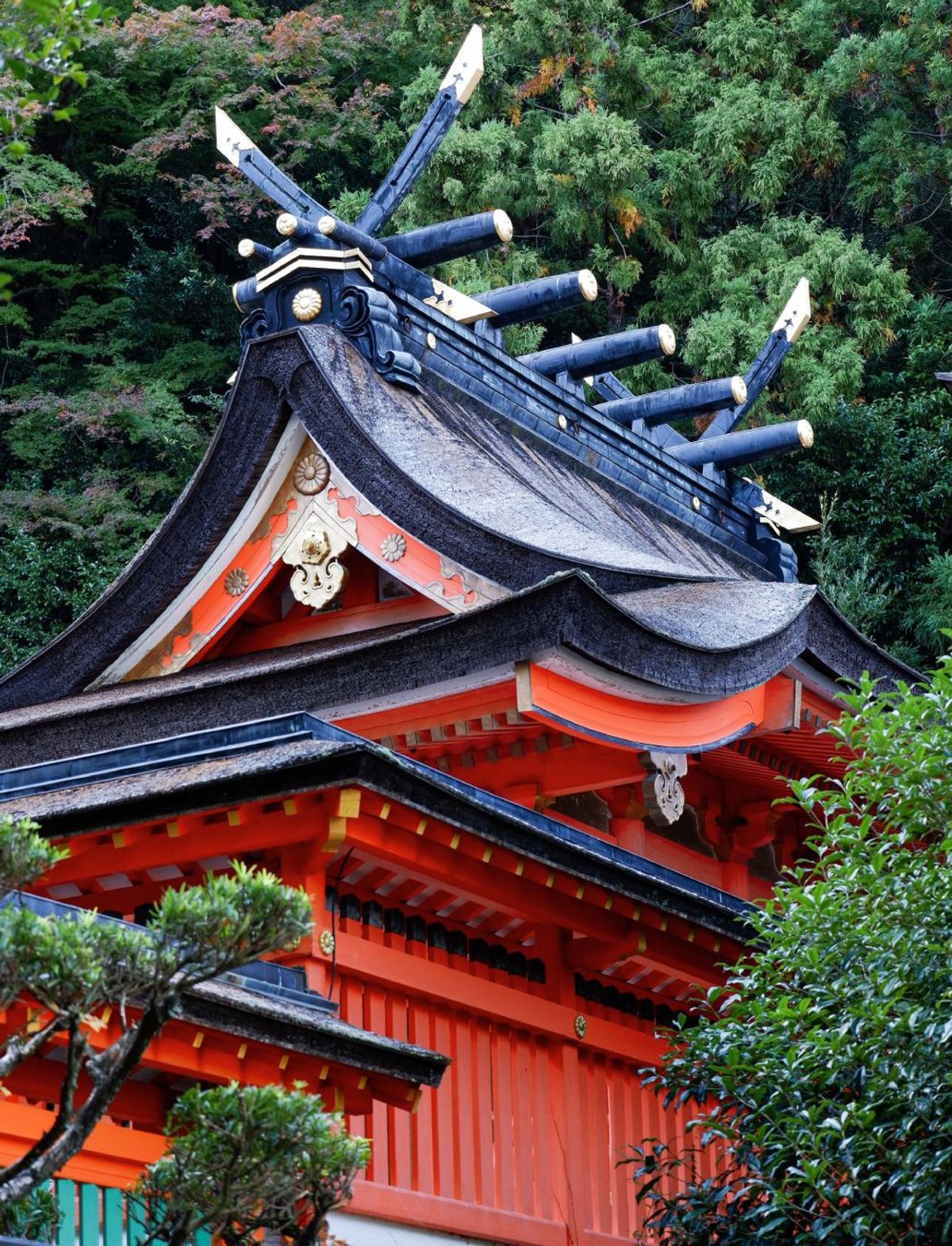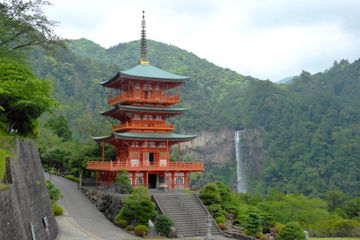
Many thanks to author and friend Cate Kodo Juno. Cate is a Buddhist priest ordained in the Shingon Buddhist tradition of Japan. She is also a "sendatsu" (先達), or official pilgrimage guide, of the Saigoku 33 Kannon Pilgrimage.
Nachi Taisha Shrine is the third of the three great shrines of Kumano (also known as the Kumano Sanzan). It is located right next to Seiganto-ji and Nachi Falls. Originally built in 317, the shrine houses a kami called Fusumi-no-kami, said to be a manifestation of Juichimen Kannon. Also enshrined here is the kami known as Musubi-no-kami (or the 'god of tying together cause and effect'). This kami’s task is to assist in bringing about the unification of the individual with the kami, or the entering of the spirit into the body.

Another meaning of the word musubi is ‘to tie the knot,’ and therefore Musubi-no-kami is also the goddess of marriage. She is also revered as the guardian kami of forestry, agriculture and fishing.
Kumano Nachi Taisha Shrine is the center of a religious group based on the avatar known as Kumano Gongen, an important figure in the spiritual mountain practices of shugenja (mountain ascetics), who is said to be the native spirit form of the Buddhist deity Kannon. This shrine is the headquarters for over 3000 shrines throughout the country.

Things to See at Nachi Taisha Shrine
Sacred Camphor Tree
Between Nachi Shrine and Seiganto-ji Temple stands this magnificent tree It is roughly 850 years old, 27 meters tall, and has a trunk circumference of 8.5 meters (it is huge!). It is said to have been planted by Taira-no-Shigemori (1138-1179). The straw rope (shimenawa) and paper flags show that this tree has been sanctified as a kami.

The tree is alive with moss and ferns and other small plants growing on its ancient limbs. It is possible to enter the tree where there is a small altar for making offerings – inside the tree you feel as though you actually hear the beating of its 800-year-old heart!
Hidehira's Sakura Tree
Fujiwara no Hidehira, one of Japan's ancient rulers of the Tōhoku region, made a pilgrimage to Kumano with his wife. During this trip, it is said that he carried this wild cherry tree from Oshu and donated it to the shrine. The sakura tree boasts a rare flower that blooms with pure white petals around the 20th of April each year. It is designated as a prefectural cultural property.
Karasu Go-ou Shinpu (神符) Charms
The characters saying “Nachi-hoin-musubi” are written in the form of 72 crows on shinpu charms for sale at Nachi Taisha Shrine. The Three-Legged Crow was considered to be the messenger of the kami of the Kumano Sanzan. This talisman signifies the binding promise made between the kami and human beings, but also between people themselves and this was used for recording formal oaths in times past.

According to legend, if someone broke their promise, one crow would die at the Kumano Sanzan. People buy the charms and put them in their home shrine to protect their family from evil.
Nachi-no-Hi Matsuri Fire Festival
Every July 14th Nachi Taisha witnesses one of Japan's most famous fire festivals, called Nachi no Hi Matsuri. Men wear purifying white clothes and carry torches (weighing up to 50 kilograms) from the temple to Nachi Falls. The ceremony is meant to guide the 12 gods enshrined in the Nachi Shrines, who are carried in mikoshi (神輿) - effectively portable shrines - to the main Nachi waterfall.



